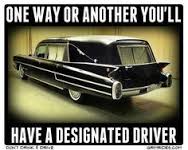BLACKOUT WEDNESDAY
“Wow, what’s
that all about?” Statistics show that
binge drinking and drunk driving increase during the holidays, beginning with Thanksgiving Eve, which is now termed “Blackout Wednesday” in many
cities. That day has become high-risk
for young people.

Some people
persist in drinking and driving based on myths about how the body reacts to
alcohol and its ability to overcome the effects. Alcohol affects the brain and body long after
you stop drinking. Any alcohol that
remains in the stomach and intestine continues to enter the bloodstream and
circulate through the body. This means judgement
and coordination can be affected for hours after you have taken your last
drink.
The average
alcohol driver arrested on the highway has a blood alcohol concentration of
.20% more than double the level for intoxication in most states. This percentage is equivalent to 14 beers in
a four hour period for a man weighing 180 lbs.
In 1997 the
world’s leading provider of alcohol testing technologies for the criminal
justice was established, the Alcohol Monitoring Systems, Inc. (AMS). In 2013 the company launched the SCRAM GPS
which helps people who have alcohol in their systems to not drink and drive. AMS employs approximately 156 people worldwide
and is a privately held company located in Littleton, Colorado. You not only have to worry about your own
life, but, the life of the other people in the vehicle with you and the other
people on the road.
 The staff of
EOS believes that everyone should have a safe and joyous season, by having
someone else drive. And if you see a
friend or family member drinking, take their keys and please offer them a ride
home. So, next year, they can have a
happy holiday with you, instead of you toasting to their memory.
The staff of
EOS believes that everyone should have a safe and joyous season, by having
someone else drive. And if you see a
friend or family member drinking, take their keys and please offer them a ride
home. So, next year, they can have a
happy holiday with you, instead of you toasting to their memory.
Employee On-Boarding
Specialties
Source: Alcohol Monitoring Systems, Inc.
Source: CAIP (a non-profit agency that provides alcohol education).




